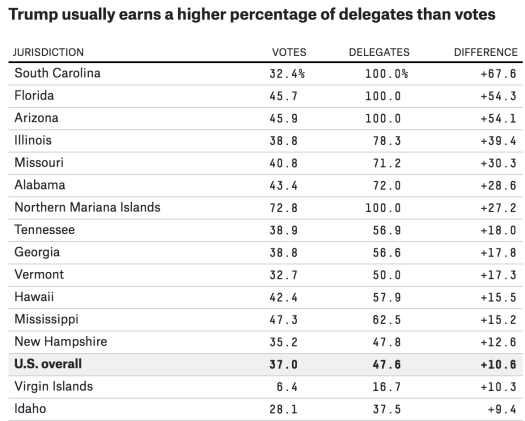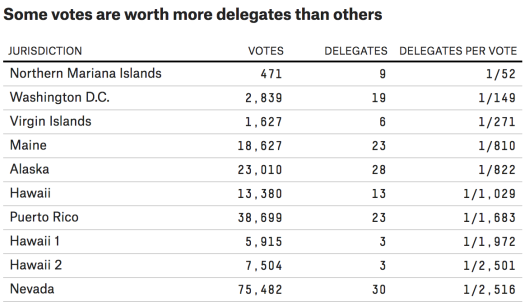Julian Evans-Pritchard on Chinese growth prospects
I first became aware of Julian Evans-Pritchard last year, and on September 8th I did a post reporting his relatively upbeat views on Chinese growth prospects. Seven months later we have received three more Chinese GDP reports, and it’s clear that Evans-Pritchard was right, at least relative to my more pessimistic view (I predicted 6.0% growth for China, the actual number is likely to be at least 6.5%).
So it’s worth revisiting Julian Evans-Pritchard, to see his current views on the growth prospects of the world’s largest economy (reported in the FT):
While GDP growth might have notched a slight fall from the fourth quarter of 2015, at Capital Economics, Julian Evans-Pritchard pointed to signs from recent data that momentum was improving heading into the second quarter:
The slowdown was concentrated in the service sector, where growth slowed from 8.2% y/y to 7.6%. We won’t get the full breakdown until tomorrow but we suspect that this was predominately due to weaker financial sector growth. Stock market turnover surged in Q1 of last year due to the equity bubble, but it has since come back down to earth. Growth in the secondary sector, which covers industry and construction, held up better, although it nonetheless edged down somewhat from 6.1% y/y to 5.8%. …
Looking ahead, we think it makes sense to focus on the monthly data for March in order to gauge the economy’s current momentum. These beat expectations across the board. In particular, the sharp pick-up in industrial production and investment leaves us hopeful that growth has now bottomed out for the time being, with looser monetary and fiscal policy likely to result in a cyclical upturn over the coming months.
Services are now more than half of the Chinese economy, and in Q1 that proportion continued to grow (and is likely to continue growing for many more decades). Chinese data is YoY, so by the second half of this year the service sector growth may speed up, as the decline in finance during the second half of 2015 will drop out of the YoY comparisons.
Here are some more bearish views, which also seem reasonable:
At Moody’s, Marie Diron sounded a wary note, pointing to other economic indicators where a rise was less welcome:
The very large increase in investment by SOEs, at 23.3%, points to a further rise in leverage and fall in return on assets in the sector, a negative signal for the sustainability of growth.
Policy measures have also contributed to a recovery in real estate, with a marked increase in floor space started in Q1. However, if the capacity that is created does not match migrants’ demand in terms of quality and location of housing, the risk of a renewed correction in the property sector will build.
Tom Rafferty, Asia economist at the EIU, concurred, suggesting property investment was unlikely to see sustained strengthening. He went on to drive home a point many economists have touched on recently – that China’s structural problems go deeper:
Today’s released data ought not to distract from the fact that the structural issues facing China’s economy remain unresolved. It has taken considerable monetary and fiscal policy loosening to stabilise economic growth at this level and this effort has distracted from the reform agenda that is fundamental to long-term economic sustainability. Levels of debt within the Chinese economy are too high and we are concerned that the authorities are not moving quickly enough to address the issue.
While today’s data points to upside risks to our forecast of 6.5% expansion in 2016 as a whole, we still believe that growth momentum will falter in coming months. Looking further ahead, we are very sceptical that the government’s targeted 6.5% “floor” for annual economic growth over the next five years will prove attainable and the risk of a sharp economic slowdown, or hard-landing, will persist.
As I’ve said before, I think China’s biggest economic problem is over-investment in third tier cities, and the excessive debt used to finance that malinvestment. Back around 2000, people talked of “bubbles” in places like Shanghai’s Pudong district, a prediction that looks ridiculous today. But the third tier cities are more worrisome in my view, as I think the Chinese people will increasingly move toward the first and second tier cities. Property prices are ridiculously high relative to income, in places like Beijing and Shanghai. But property prices should be ridiculously high relative to income, in places like Shanghai and Beijing. Those are the next Tokyo/New York/London-type cities, while interest rates are low, and will stay low.
PS. If you wonder why China is so important, consider the following:
The U.S. dollar rallied and major stock markets rose on Wednesday after JPMorgan’s results beat lowered expectations and upbeat Chinese trade data offered hope Asia’s biggest economy is finally stabilising.
The euro fell nearly 1 percent versus the greenback as stronger Chinese economic growth boosted recently batted-down expectations that the Federal Reserve could raise interest rates again in the not-too-distant future.
Equity markets as far flung as Hong Kong and Germany rose sharply on the recent China data, and it even impacted the likely future path of Fed policy. When you are the world’s largest economy, you affect everything.
PPS. I recently mentioned that 31 students from my wife’s (Beijing) high school were accepted by UCLA. I just got some more info. The graduating class included 120 students, and 15 of them got perfect (2400) scores on the SAT—in what for them was a foreign language. I wonder how many public schools in America have those kinds of scores. Middle income trap for China? I doubt it.
Meanwhile, back in the States, we have about 500 perfect scores each year, many in California:
About 80 California high school students out of some 234,767 taking the SAT last year scored that perfect trifecta. Of these 80, a stunning one-quarter, or 20, came out of the program at a two-year-old San Diego startup company, Summa Education Services, founded by Chief Executive Chris Hamilton and his partners Andrew Chung and test-whiz Karl Hagen.
. . . Hamilton needs to leave his modern Carmel Valley office, where chairs are piled high with new hard-bound novels he hands out like strawberry pancakes. Time to teach a class on reading comprehension. It is a discrete sea of energetic Chinese/Korean/Indian faces.
I find this kind of sad—what a waste of time in such an affluent society.



